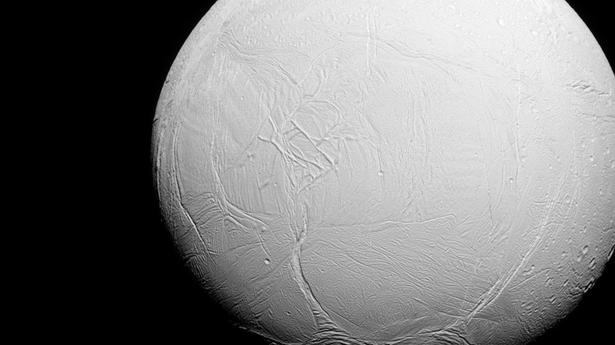
Enceladus and its endless secrets
The Hindu
Discovered on August 28, 1789, Enceladus is a natural satellite of Saturn. This moon, which remained in relative obscurity for nearly 200 years, is now one of the most scientifically interesting destinations in our solar system. Join A.S.Ganesh as he tells you how a tiny moon has turned out to be a promising lead in our search for the possible existence of life elsewhere…
The possibility of worlds other than our own Earth where life could exist has enthralled us for a long time. Often seen in the realm of science fiction, we might be inching ever so closer to it in reality as scientists have identified a handful of worlds that have some of the ingredients needed for life. One of them is Enceladus, an icy moon that is the brightest in the solar system.
Enceladus was discovered on August 28, 1789 by British astronomer William Herschel, more popular for discovering the planet Uranus. Little is known about how William went about it and made his discovery.
What we do know, however, is that it was William’s son, John Herscel, who gave the moon its name Enceladus, after the giant Enceladus of Greek mythology. In his 1847 publication Results of Astronomical Observation made at the Cape of Good Hope, John suggested names for the first seven moons of Saturn that had been discovered, including Enceladus. He picked these particular names as Saturn, known in Greek mythology as Cronus, was the leader of the Titans.
For nearly two centuries, very little was known about Enceladus. That changed in the 1980s, when the U.S. spacecrafts Voyager 1 and Voyager 2 flew by the moon, capturing images. The pictures indicated that the icy surface of this small moon is very smooth in some places and bright white all over.
Enceladus, in fact, is the most reflective body in the solar system. Scientists, however, didn’t know why this was the case for a few more decades. Enceladus’ reflective capability implies that it reflects almost all the sunlight that strikes it, leading to extremely cold surface temperatures, of the order of -200 degree Celsius.
Shortly after NASA’s Cassini spacecraft began studying Saturn’s system in 2004, Enceladus started revealing its secrets. By spending over a decade in the vicinity of the small moon, including flybys as close as 50 km, Cassini was able to unearth a wealth of information about Enceladus.
Cassini discovered that icy water particles and gas gush from the moon’s surface at about 400 metres per second. These continuous eruptions create a halo of fine dust around the moon, which supplies material for Saturn’s E ring. While a small fraction of this remains in the ring, the remaining falls like snow back onto the moon’s surface, thereby making it bright white. Scientists informally call the warm fractures on Enceladus’ crust from which the water jets come from as “tiger stripes.”





















 Run 3 Space | Play Space Running Game
Run 3 Space | Play Space Running Game Traffic Jam 3D | Online Racing Game
Traffic Jam 3D | Online Racing Game Duck Hunt | Play Old Classic Game
Duck Hunt | Play Old Classic Game











